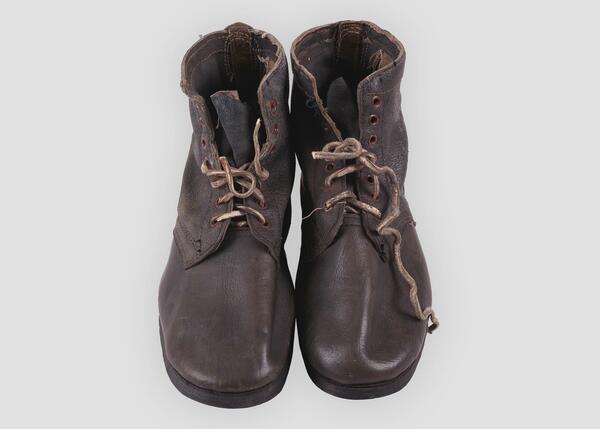Up until the middle of the 20th century, almost all common footwear around the world, especially for the military, was made exclusively of leather of various grains, types and finishes. In shoemaking, leather was used for its durability and resistance to water. However, leather was a rather expensive material. Besides shoes, leather was used to make other army equipment — belts, straps, ammo pouches and much more. This meant high demand and led to growing prices.
Since the First World War, due to the shortage and high cost of leather in Russia, tall boots intended for enlisted personnel began to be replaced by ankle boots with puttees (leg wraps). Ankle boots at that time were called “polusapogi” (literally, “half-boots”). This made its way into the Workers’ and Peasants’ Red Army. Ankle boots were used on par with tall boots until the 1940s.
Despite attempts to introduce boots made from kirza (a type of artificial leather) into supply since the mid-1930s, they appeared in large numbers in the Red Army only during the Great Patriotic War. As a result, soldiers received ankle boots instead of tall boots from the very beginning of the war. Film and photo chronicles from Berlin in 1945 show soldiers wearing this type of shoe even in the final stages of the war. With the end of the war and the demobilization of many Red Army troops, issues with boot supplies were solved. Up until the 2000s, kirza boots were the primary footwear of Soviet and later Russian soldiers.
These boots were used not only by the Red Army, but also by the Navy. Interestingly, ankle boots were given exclusively to enlisted personnel, while the command staff, depending on seniority, wore tall boots of Russian leather and boots tanned with chromium salts. Supplying tank forces with tall boots was prioritized, however, during the war, when there were interruptions in supply, both commanders and tankers wore ankle boots. Ankle boots, just like tall boots, were made of leather, but the shorter bootleg made it possible to save up on material. Depending on the manufacturer, the shoes could differ in minor details, including the outsole. The sole itself was also made of leather, while the outsole and heel could be made of rubber. Modifying shoes by attaching metal plates — oftentimes to both the toe and the heel of the sole — was a common practice.




